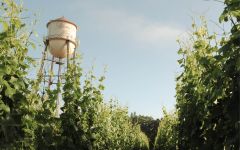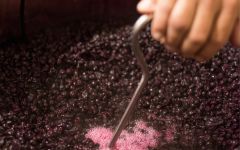Martin Ray Russian River Valley Brut Rose 2018
-
James
Suckling



Product Details
Your Rating
Somm Note
Winemaker Notes
Blend: 66% Pinot Noir, 34% Chardonnay
Professional Ratings
-
James Suckling
A creamy and round textured full-bodied bubbly with lovely peach and cream notes. A new sparkling wine from Martin Ray.











The name Martin Ray resonates deeply in the history of California Winemaking. Martin Ray was a pioneer, dedicated to crafting single varietal, region specific wine from 1943 through 1972 in Saratoga, in the heart of the Santa Cruz Mountains. Mentored by Paul Masson, he took a Burgundian approach to his winemaking, and developed what is now one of the most historical properties in California, known as Mount Eden.Nearly twenty years later, Courtney Benham stumbled upon 1500 cases of Martin Ray wine in a San Jose warehouse. Recognizing his good fortune, and his intent and drive to produce terroir driven wines, Ray’s historical significance and philosophy resonated with him. Courtney purchased the brand, and since 1990 has been committed to the production of artisanal wines worthy of the Martin Ray name.In 2003, Martin Ray Vineyards & Winery made its home in the Russian River Valley, one of the oldest continually working wineries in California. Today, Courtney and his winemaking team devote themselves to Ray’s ideology of making “wines of place”. They are relentlessat telling the story of wine. The depth of the portfolio offers those seeking a unique experience the chance to explore some of the most revered regionsin California. Fromthe Russian River Valley to Napa Valley and the Santa Cruz Mountains, there is an abundance of phenomenal growing regions, great farming, and meticulous detail to vintages.

What are the different types of sparkling rosé wine?
Rosé sparkling wines like Champagne, Prosecco, Cava, and others make a fun and festive alternative to regular bubbles—but don’t snub these as not as important as their clear counterparts. Rosé Champagnes (i.e., those coming from the Champagne region of France) are made in the same basic way as regular Champagne, from the same grapes and the same region. Most other regions where sparkling wine is produced, and where red grape varieties also grow, also make a rosé version.
How is sparkling rosé wine made?
There are two main methods to make rosé sparkling wine. Typically, either white wine is blended with red wine to make a rosé base wine, or only red grapes are used but spend a short period of time on their skins (maceration) to make rosé colored juice before pressing and fermentation. In either case the base wine goes through a second fermentation (the one that makes the bubbles) through any of the various sparkling wine making methods.
What gives rosé Champagne and sparkling wine their color and bubbles?
The bubbles in sparkling wine are formed when the base wine undergoes a secondary fermentation, which traps carbon dioxide inside the bottle or fermentation vessel. During this stage, the yeast cells can absorb some of the wine’s color but for the most part, the pink hue remains.
How do you serve rosé sparkling wine?
Treat rosé sparkling wine as you would treat any Champagne, Prosecco, Cava, and other sparkling wine of comparable quality. For storing in any long-term sense, these should be kept at cellar temperature, about 55F. For serving, cool to about 40F to 50F. As for drinking, the best glasses have a stem and a flute or tulip shape to allow the bead (bubbles) and beautiful rosé hue to show.
How long do rosé Champagne and sparkling wine last?
Most rosé versions of Prosecco, Champagne, Cava or others around the “$20 and under” price point are intended for early consumption. Those made using the traditional method with extended cellar time before release (e.g., Champagne or Crémant) can typically improve with age. If you are unsure, definitely consult a wine professional for guidance.

A standout region for its decidedly Californian take on Burgundian varieties, the Russian River Valley is named for the eponymous river that flows through it. While there are warm pockets of the AVA, it is mostly a cool-climate growing region thanks to breezes and fog from the nearby Pacific Ocean.
Chardonnay and Pinot Noir reign supreme in Russian River, with the best examples demonstrating a unique combination of richness and restraint. The cool weather makes Russian River an ideal AVA for sparkling wine production, utilizing the aforementioned varieties. Zinfandel also performs exceptionally well here. Within the Russian River Valley lie the smaller appellations of Chalk Hill and Green Valley. The former, farther from the ocean, is relatively warm, with a focus on red and white Bordeaux varieties. The latter is the coolest, foggiest parcel of the Russian River Valley and is responsible for outstanding Pinot Noir and Chardonnay.
